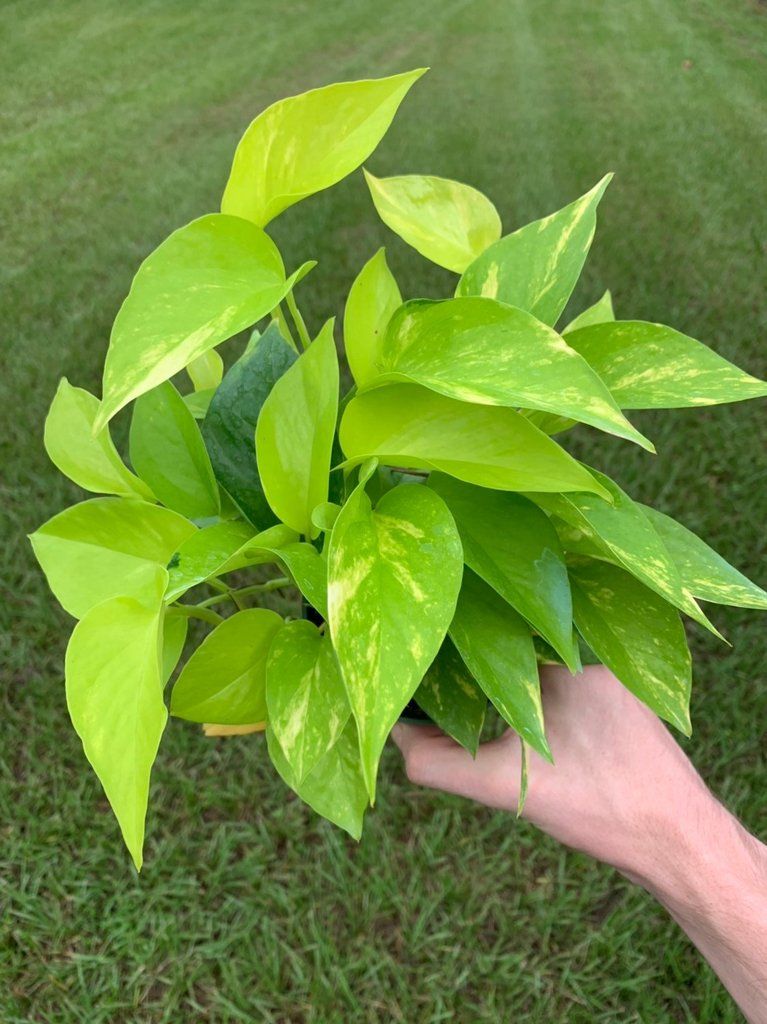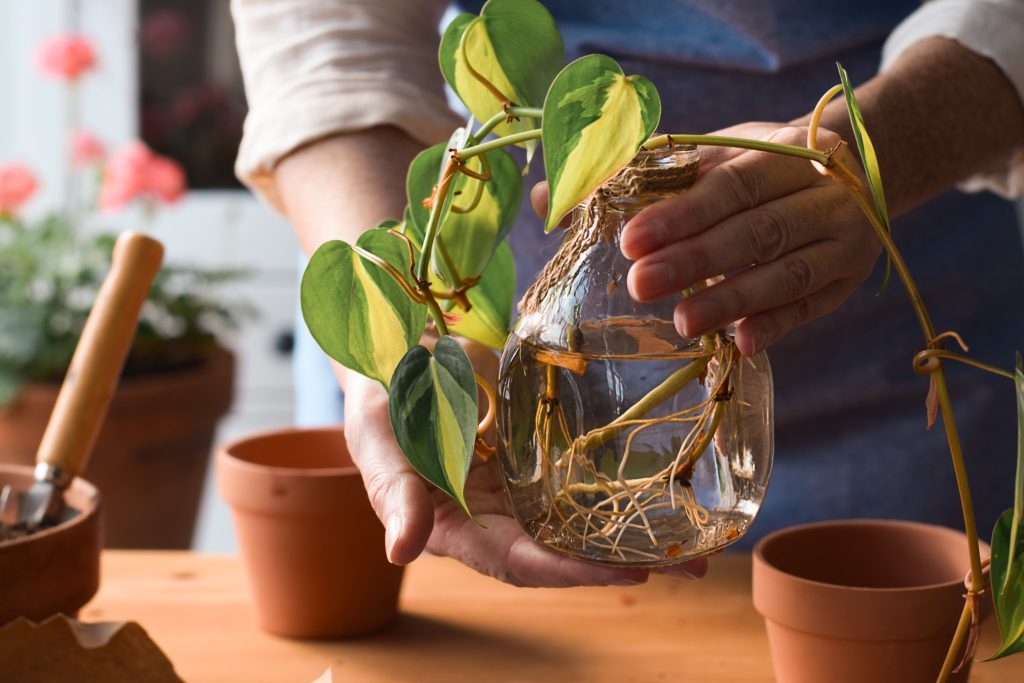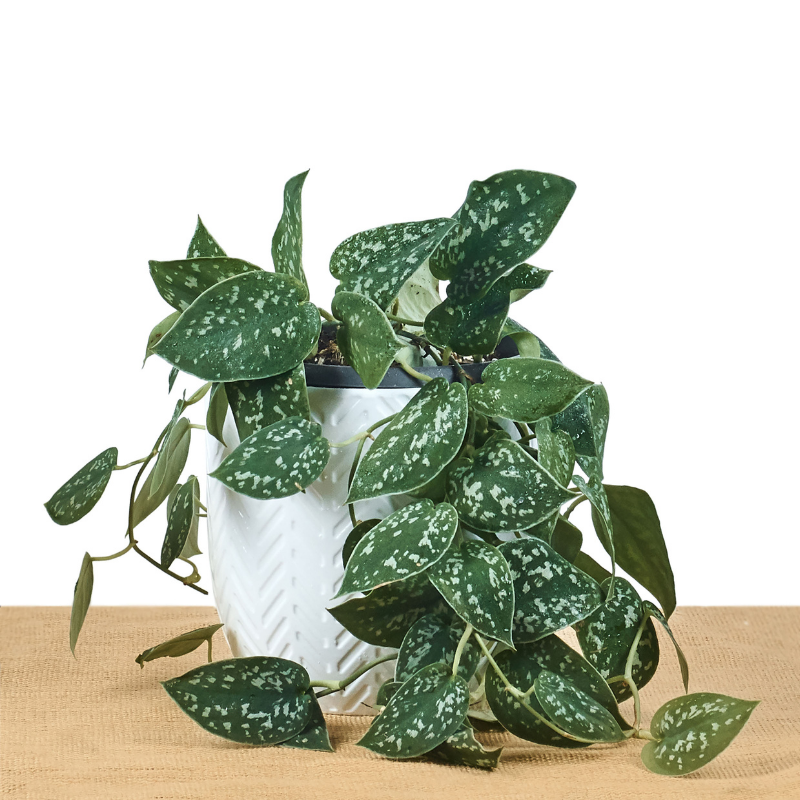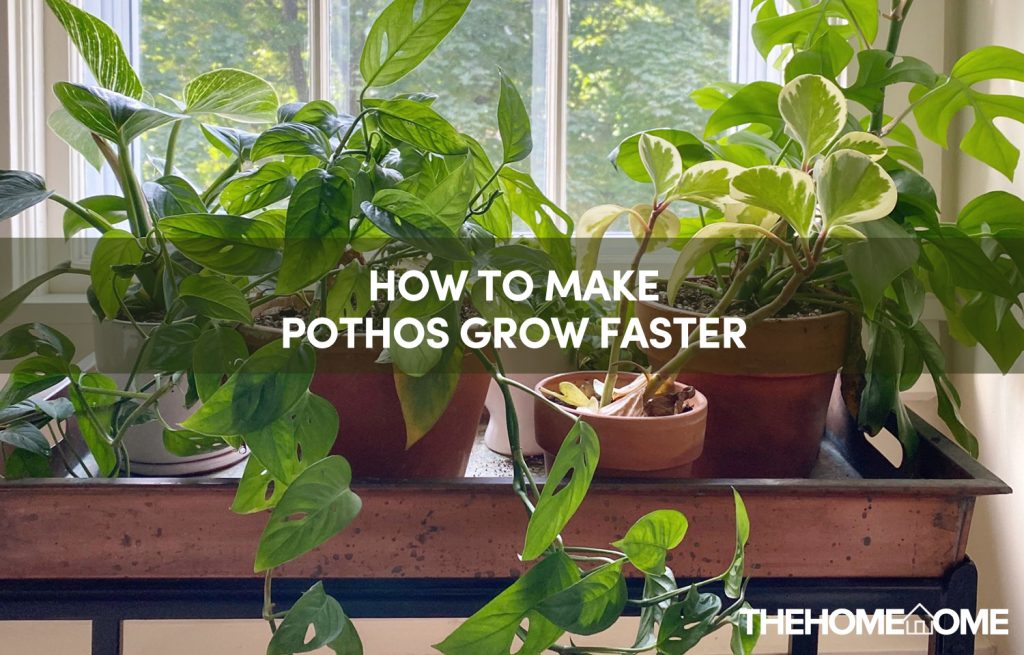Pothos are popular houseplants because they are sturdy and easy to care for. However, as a pothos owner, your plant is not growing at a steady pace, and you need solutions?
Pothos are easy-growing plants, but as with every other houseplant, they are certain criteria needed to help them grow faster. If your pothos looks dormant and unhealthy, do not fret, this article would indulge in certain tips to help your plant look vibrant and grow faster.
You can grow your pothos faster by; repotting with good quality potting soil, investing in humidifies for houseplants, using brighter indirect sunlight, the right room temperature (50-70°F) is key, keep a regulated watering schedule, prune damaged or dead leaves, fertilizer properly and always check for pests.
Pothos is a favorite because they are affordable, and easy to grow with their lush leaves and a variety of colors. Unfortunately, if your pothos is not growing as quickly as they should and you want them to grow faster. Read on, to discuss all you need to know about growing pothos faster.
Why Your Pothos Plants May Not Be Growing
You may believe you’re caring for your pothos the right way, but it is not growing as quickly as expected. And you wonder why it has stopped growing?
There are several reasons why your pothos is not growing as expected and are experiencing stunted growth. You may need to adjust their living environment, or how you are treating it. Below are certain reasons why your pothos isn’t growing.
- Your potting soil lacks good quality nutrients and you may need to repot.
- Watering is not regulated. You are either over-watering or under-watering. This could lead to either root rot or dehydration.
- The plant is either exposed to too much direct sunlight or not enough sunlight. pothos need bright indirect sunlight to grow faster.
- Humidity is key, when your home’s temperature is either too hot or cold, it could lead to stunted growth.
- The potting soil has too much fertilizer in it. Pothos are not dependent on fertilizers to grow, instead, use a balanced fertilizer occasionally.
- Lastly, ensure the pot size or potting tool used is spaced to accommodate growth.

How To Make Pothos Plants Grow Faster
Pothos are prolific houseplants that can grow to peak about 12 inches (30 cm) per month, during their growing season and with proper care. If you build a good living atmosphere and temperature for your pothos, it can grow even faster and further.
The key to a fast-growing pothos plant is when it is grown in humid temperatures under bright artificial/indirect light, and with a rich well-draining potting soil. The nutrient is key for your pothos and it is advised you fertilizer every few months with balanced or inorganic fertilizers.
Here are 9 things to do, to help boost the growth of your pothos plant:
1. Use Quality Well-Draining Potting Soil Mix
Start with choosing the right potting soil for your pothos. Ensure it is high-quality for boosting growth.
The soil mix should have well-draining factors, as a plant sitting in over-watered soil leads to stunted growth and root rot. Pothos grown in water will grow, although not as quickly as the ones cultivated with soil.
The ideal potting soil mix should provide your plant with nutrients, while retaining moisture and contain good drainage factors, to help your plant grow faster.
2. Use The Right-Sized Pot
Your pothos shouldn’t be too big for the potting tool in use. Place your pothos in a pot that is just one size larger than the plant.
Keep the plant slightly root-bound, as it helps the plant to direct its energy to develop from the top. Using a right-sized pot and quality potting soil mix gives the plant a good atmosphere for growth.
3. Use Soils With The Right pH Levels
Pothos grow better with pH levels that range from 6.1 to 7.
Refrain from using soil with acidic or alkaline, as it defers your pothos plant from growing. It is advisable to use a pH meter, to ensure your soil pH level is within the proper range.
4. Use A Regulated Watering Technique
Pothos plants require moderate and regulated watering. Do not water too much or too little, as it stunts the growth of the plant.
Watering your plant properly leads to fast growth. However if watered too much, it leads to root rot, and too little leads to withering, dehydrated plants.
It is better to water during its growing season, and when the soil is dry. A good-draining soil, should drain the excess water, and provide the plant with needed moisture, thereby reducing stunted growth.

5. Fertilize Periodically
Although pothos needs less fertilizer than other houseplants, fertilizing every month during its growing season (spring and fall) can boost its growth.
Pothos are sensitive to fertilizers with fluoride and are allergic to fertilizers with even a little fluoride. Hence, using fertilizers with no fluoride added will help your pothos grow healthy and faster. Neem oil can be used as natural fertilizer.
6. Place Pothos In A Place With Indirect Bright Sunlight
Pothos grow quickly with the right amount of sunlight, place them about 6 inches away from the windows for bright indirect sunlight.
You can also use artificial light, in case the room does not have enough sunlight coming in. Don’t place your pothos in areas, where it is exposed to direct sunlight, as it may lead to sunburnt pale or whitish leaves.
Monitor your plant carefully, to check if it’s getting too much sunlight or too light, and keep adjusting its living conditions until it is exposed to the best lighting possible.
7. Maintain Humidity and The Right Room Temperature
Pothos thrive in proper humidity and room temperatures, ranging from 70 to 90°F.
The plant can survive in temperatures as low as 55°F, but temperatures lesser can result in death or discolored foliage. You can also invest in the best dehumidifiers for houseplants, to keep your plant situation with the right amount of humidIty.
8. Prune Dead, Damaged, or Discolored Leaves
Always prune or trim with clean and sterile pruning shears or scissors.
Ensure you lay paper towels or newspapers under the plant, to keep the area clean when pruning. It is best to prune during the plant’s growing season (with spring and fall).
Examine the plant carefully and remove damaged or dying leaves as soon as possible. It is best to prune or trim when it is necessary and do it close to a healthy leaf mode, to encourage new growth.

9. Monitor for Pest/Bug Infestation
Although it is uncommon for houseplants to experience pest infestation. Mealybugs, mites, caterpillars, and thrips are common pests that infest pothos plants.
When pothos are attacked by pests, it may lead to stunted growth or damage to the plant’s foliage and leaves. Therefore you must act promptly.
You can either use a spray bottle or wipe down the leaves, with mild alcohol and water mix, or pesticides, or 1 tbsp of dishwashing liquid with 1 liter of water, for an organic pesticide. Check out the list of spray bottles for plant parents we recommend.
Frequently Asked Questions
Should I mist my pothos?
Pothos doesn’t need misting to thrive. However, in dry and dusty conditions, light misting can be helpful. Misting is also not the solution for insufficient humidity levels.
Does pothos need direct sunlight?
Direct sunlight can be too harsh on the foliage of pothos plants. Instead, bright indirect sunlight is sufficient for the growth of your pothos plant.
Why is my pothos growing slowly?
Too little watering, low humidity, and bad potting soil mix can be reasons why your pothos is growing slowly. Ensure the room temperature is between 70-90°F.
Summary
Pothos plants are sturdy, easy to groom, and prolific plants, which are common in many homes, offices, or gardens.
However, you have to ensure your plant is placed in a good living environment and cared for properly. This article has discussed the best mediums to help your pothos grow faster, and adhering to them would give you good results.

